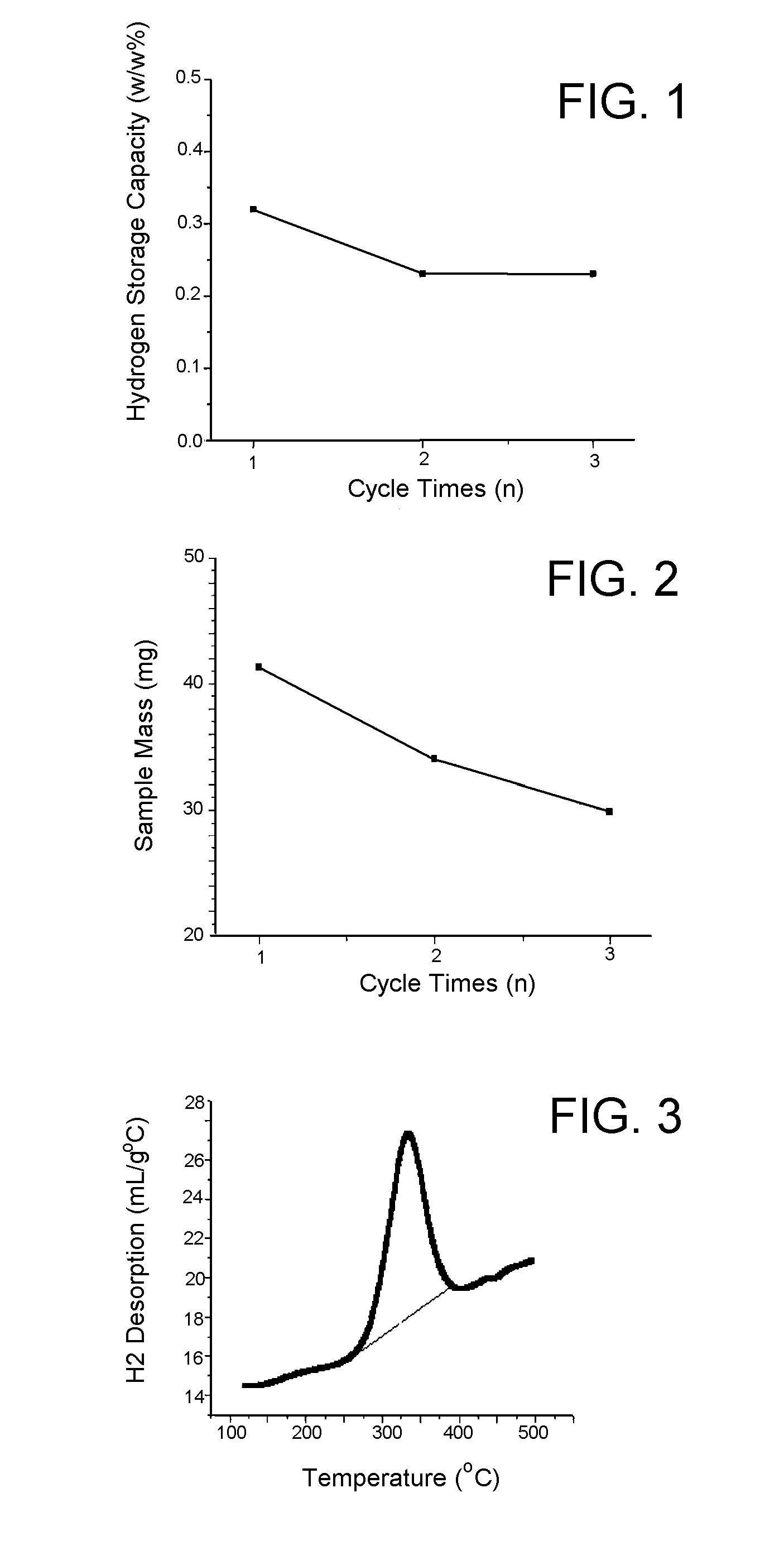Solid-state hydrogen storage media and catalytic hydrogen recharging thereof
a hydrogen storage media and solid-state technology, applied in the direction of physical/chemical process catalysts, cell components, other chemical processes, etc., can solve the problems of more conventional hydrogen storage technologies, skin damage, and ill-suited mobile applications such as passenger vehicles, and achieve the effect of reducing the cost of owning and operating
- Summary
- Abstract
- Description
- Claims
- Application Information
AI Technical Summary
Benefits of technology
Problems solved by technology
Method used
Image
Examples
Embodiment Construction
[0014]The present invention describes a process and solid-state storage material with which full or nearly-full recharging can be attained for hydrogen onto the material. The invention addresses problems resulting from dangling bonds of a storage material reforming upon dehydrogenation, making fewer sites available for subsequent hydrogen storage (recharging). The present invention overcomes these problems by treating the storage material to remove those hydrogen atoms that are least energetically bonded to atoms of the storage material, and thereby intentionally create sites with dangling bonds, while not removing hydrogen atoms that are more energetically bonded to atoms of the storage material. A catalyst is then introduced into the storage material that molecularly bonds with the dangling bonds, after which hydrogen recharging can be repeatedly performed without significantly loss of hydrogen bonding sites within the storage material. Furthermore, recharging can be performed wit...
PUM
| Property | Measurement | Unit |
|---|---|---|
| Temperature | aaaaa | aaaaa |
| Time | aaaaa | aaaaa |
| Energy | aaaaa | aaaaa |
Abstract
Description
Claims
Application Information
 Login to View More
Login to View More - R&D
- Intellectual Property
- Life Sciences
- Materials
- Tech Scout
- Unparalleled Data Quality
- Higher Quality Content
- 60% Fewer Hallucinations
Browse by: Latest US Patents, China's latest patents, Technical Efficacy Thesaurus, Application Domain, Technology Topic, Popular Technical Reports.
© 2025 PatSnap. All rights reserved.Legal|Privacy policy|Modern Slavery Act Transparency Statement|Sitemap|About US| Contact US: help@patsnap.com



